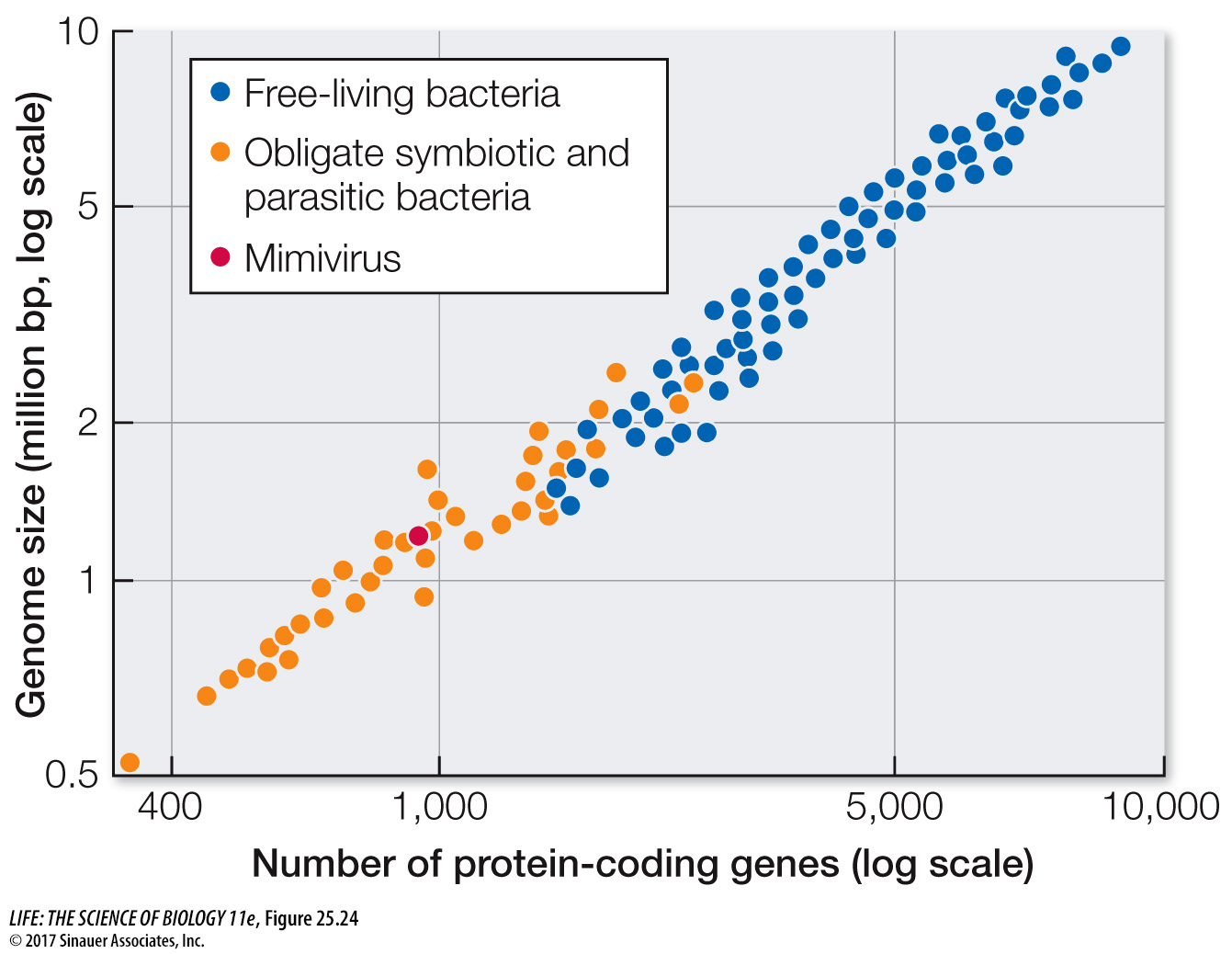Some DNA viruses may have evolved from reduced cellular organisms
Another class of viruses is composed of viruses that have a double-stranded DNA genome (see Figure 25.22D–F). This group is also almost certainly polyphyletic (with many independent origins). Many of the common phage that infect bacteria are double-stranded DNA viruses, as are the viruses that cause smallpox and herpes in humans.
Some biologists think that at least some of the DNA viruses may represent highly reduced parasitic organisms that have lost their cellular structure as well as their ability to survive as free-living species. For example, the mimiviruses, which are some of the largest DNA viruses (see Figure 25.22F), have a genome in excess of a million base pairs of DNA that encode more than 900 proteins. This genome is similar in size to the genomes of many parasitic bacteria and about twice as large as the genome of the smallest bacteria (Figure 25.24). Phylogenetic analyses of these DNA viruses suggest that they have evolved repeatedly from cellular organisms. Furthermore, recombination among different viruses may have allowed the exchange of various genetic modules, further complicating the history and origins of these viruses.

Figure 25.24 Mimiviruses Have Genomes Similar in Size to Those of Many Parasitic Bacteria The genome of Acanthamoeba polyphaga mimivirus contains 1,181,404 base pairs and encompasses 911 protein-encoding genes. This observation is consistent with the hypothesis that this virus evolved from a parasitic bacterium.
Question
Q: Why do parasitic bacteria generally have smaller genomes and fewer protein-coding genes than free-living bacteria do?
Parasitic bacteria can depend on the gene products of their hosts, so some of their genes can be lost without loss of function. Small genomes allow smaller cell size, and small size is beneficial for a parasite that lives within other cells.
